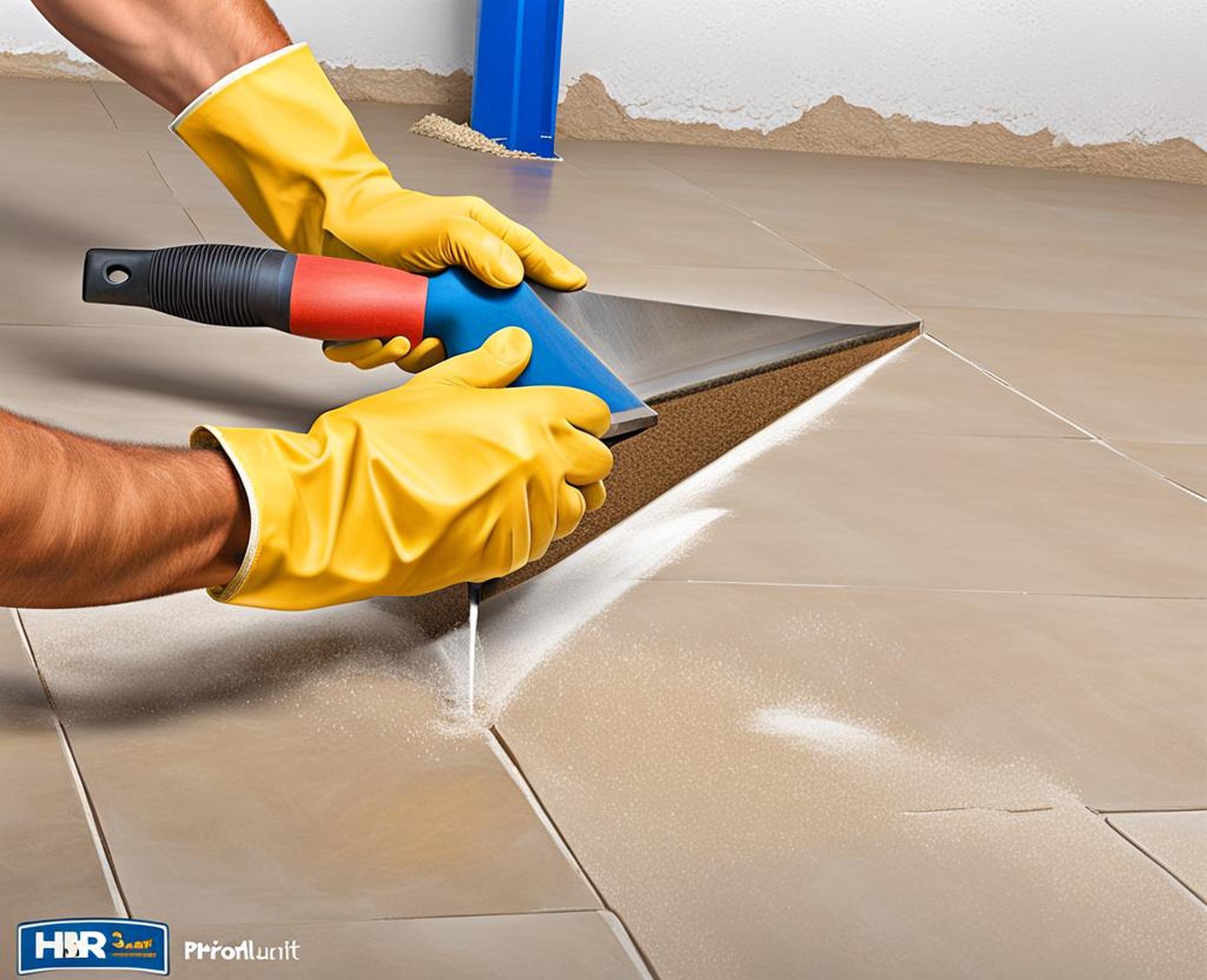Removing tile mortar from concrete floors can be a tedious and messy process. Old, cured mortar bonds tightly to the concrete, requiring elbow grease and the right tools to break it free. But with some planning and the proper techniques, you can erase those remnants of old tile and restore your concrete floor.
Before you start chiseling away, it’s important to understand what type of mortar you’re dealing with. Cement-based mortars are more common, while epoxy mortars create an extremely strong bond. Mortar installed over a wire lath reinforcement will also prove harder to remove. Older mortar is typically more stubborn than newly cured products. Inspect the surface and make note of any hollow or cracked areas, which indicate where the bond has weakened.
Safety Gear and Setup Are Essential for Mortar Removal
Mortar removal is a messy process that kicks up loads of dust and debris. Protect yourself with safety goggles, a respirator mask, gloves, knee pads, and earplugs for power tool use. Contain the mess by laying down plastic sheeting and tarps in the surrounding area and setting up portable fans or air scrubbers with HEPA filters to control dust.
Clear out any furniture or valuables from the workspace and tape off any adjoining areas like doorways or hallways. Have a wet/dry vacuum on hand to regularly vacuum up debris and slurry as you work. Proper prep protects your health, home, and makes cleanup much easier.
Manual Tile Mortar Removal with Hand Tools
For mortar that’s not too thick or well-bonded, start by trying manual removal with hand tools. Use a cold chisel and hammer to chip away at edges and seams in the mortar. Work systematically in small sections, striking the chisel at an angle parallel to the floor to avoid gouging the concrete. A pry bar, putty knife, or heavy-duty wall scraper can also help scrape and peel off the mortar once loosened.

For stubborn areas, try soaking the mortar with water or carefully warming it with a heat gun to loosen the bond, then chip away. Feather shims can wedge into crevices to pry off pieces of mortar. While slower, hand tools provide targeted mortar removal without damaging the integrity of the underlying concrete.
Power Grinders Offer Faster Tile Mortar Removal
When dealing with thick, well-adhered mortar, power tools get the job done much faster. An electric chipping hammer delivers concentrated pounding force through carbide or star drill bits to pulverize mortar. Angle grinders outfitted with diamond cup wheels efficiently grind down thinset. Adjusting the angle allows you to either grind or scrape the mortar. For large floor areas, a floor maintainer with diamond cup attachments combines power with a sweeping action.
Power tools remove material quicker but also generate much more dust and debris. Strategies like frequent vacuuming, misting water as you grind, and wearing a respirator are essential to manage the mess.
Once all traces of the mortar have been removed, thoroughly clean the concrete floor. Start by dry sweeping, then go over the entire surface with a wet/dry vac to remove the last bits of dust and debris. Use tack cloths, mops, or damp microfiber towels to wipe any remaining residue off the bare concrete.
Inspect the surface and make any repairs needed, like patching cracks or smoothing uneven spots with a quality concrete resurfacer. For significant damage, a self-leveling underlayment can restore flatness prior to installing new tile or floor coverings. Proper cleaning and prep ensures your new flooring bonds tightly to create a durable surface.
By choosing the right mortar removal methods and taking safety precautions, you can successfully erase old tile mortar without damaging the integrity of your concrete floor. With some perseverance and the proper tools, you’ll restore your concrete slab and have it ready for new tile, stain, or coatings in no time.
If the mortar proves extremely difficult to remove with manual scraping and chiseling, consider using a chemical mastic remover specifically designed to dissolve the adhesive bond. Always wear proper protective equipment like gloves, goggles and a respirator when using chemical removers.
For large floor areas, renting a heavy-duty floor grinder can make quick work of removing even thick bonded mortar. These machines use diamond grinding wheels that abrade away the adhesive. Be sure to control the dust generated by wearing a respirator and having proper ventilation.
A handheld grinder provides a smaller, more portable option suitable for tight spaces. Outfitted with a diamond cup wheel or scraper attachment, these grinders allow you to remove stubborn thinset without having to invest in an expensive floor grinder rental.
